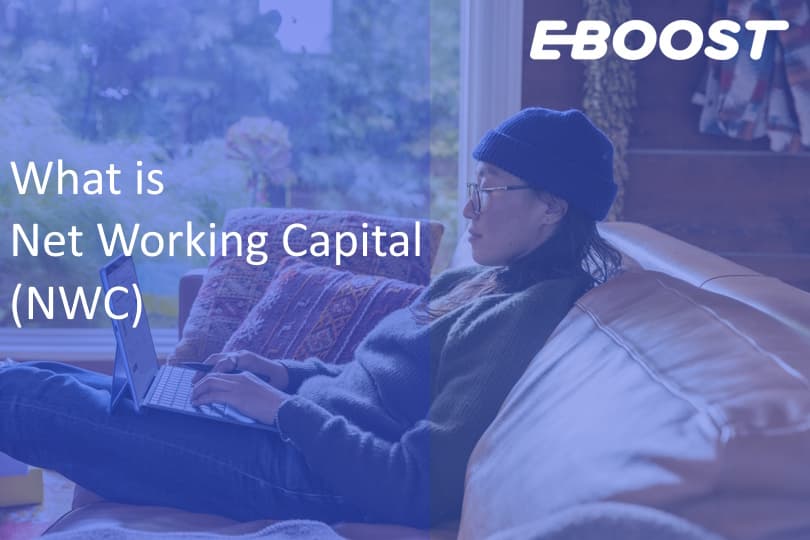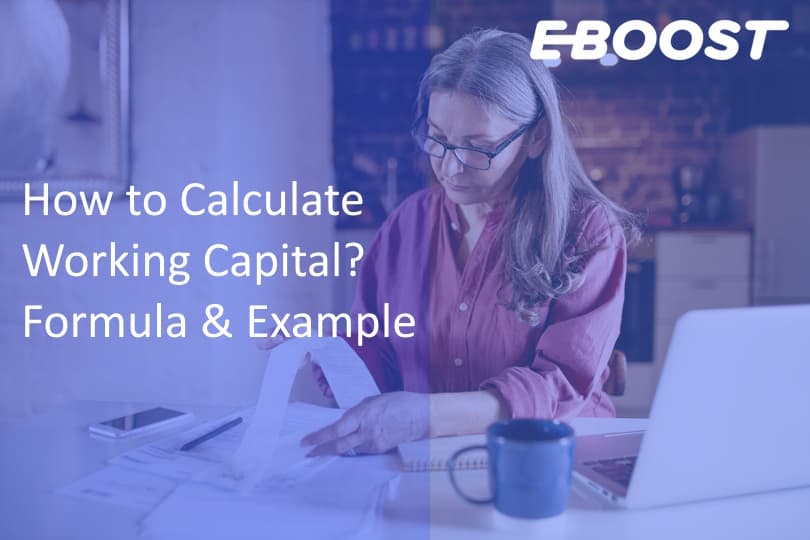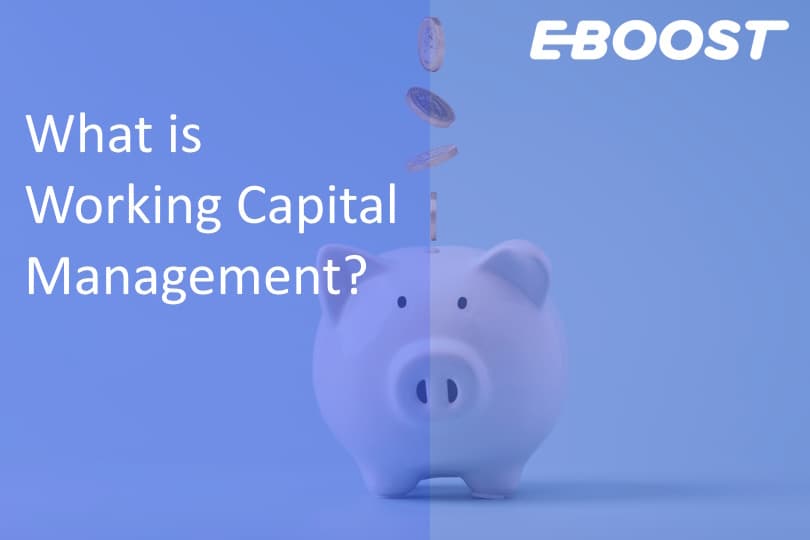Key Takeaways
- Working capital is the money you rely on to handle everyday expenses – think payroll, rent, and inventory.
- A working capital ratio between 1.2 and 2.0 is often considered healthy; too low can be risky, too high might mean missed growth opportunities.
- Key factors affecting your working capital needs include business size, industry, seasonal demand swings, payment terms, and future growth plans.
- Strategies like negotiating better payment terms, streamlining inventory, or using short-term financing can help improve your cash flow.
- When you’re short on working capital or want a buffer for growth, a loan from Eboost Partners (offering $5K–$2M) can ensure you’re prepared for both routine costs and new opportunities.
Have you ever caught yourself staring at your business bank account and thinking, “Am I keeping enough cash on hand to handle my day-to-day expenses?” Maybe you’re juggling the cost of new inventory, eyeing overdue invoices, or just wondering if you’ll have enough money left to finally hire that extra salesperson. If so, you’re not alone. Figuring out working capital needs can feel like a maze – especially when you’re busy running a company. I’m here to walk you through this topic as someone who’s seen it all at Eboost Partners.
I’ve spent years chatting with business owners about how they keep their company afloat and growing without missing a beat on payroll or bills. Sometimes these folks have formal finance backgrounds. Other times, they’ve built their operations purely on gut instinct and sheer determination. No matter where you’re coming from, the concept of working capital is something that can either make or break your enterprise’s financial well-being.
So, let’s talk about working capital and how you can figure out how much is enough. And if you find that you could use a financial boost – say, anything from $5K up to $2M – then Eboost Partners is here to help with business loans tailored to your unique needs.
What is Working Capital?
Working capital basically represents the funds you have available to manage your regular business activities: paying suppliers, covering payroll, and even grabbing office supplies. Technically, working capital is the difference between your current assets (like cash and accounts receivable) and your current liabilities (such as bills and short-term loans). It’s a straightforward calculation, but the real trick is knowing how to leverage it.
For a more specific breakdown, you might want to explore operating working capital, which focuses on the capital directly tied to daily operations.
If you want a deeper explanation, check out our full article on working capital for business that goes beyond the basics and sheds light on additional nuances.
How to Calculate Working Capital
At first glance, the math for working capital is pretty simple:
Working Capital=Current Assets−Current Liabilities
But there’s more to it. For instance, do you count inventory as part of your current assets, or do you treat it differently? Or perhaps you’re wondering about the net working capital formula and how it differs from gross working capital. There’s also a conversation around items like deferred revenue net working capital, which can muddy the waters if you’re not careful with your bookkeeping. The idea is to factor in all the short-term obligations and resources that you can easily convert to cash.
I recently wrote a dedicated post on the how to calculate working capital with more examples and tips. Feel free to check it out if you’re curious about the details.
Learn more about difference between working capital and net working capital.
How Much Working Capital Do You Need?
That’s the million-dollar question, isn’t it? My short answer is: it depends on your specific situation. My long answer: every business needs enough cushion to handle expenses during lean times, plus extra funds to seize new opportunities. Picture yourself as a shop owner who sees a huge discount on raw materials next month. If you have just enough working capital to coast, you might miss that bargain. But if you’ve built up a decent buffer – or have a fast way to get more capital – you can grab that opportunity and come out ahead.
Some financial experts say that maintaining a working capital ratio formula of 1.2 to 2.0 is a good rule of thumb. This ratio is calculated by dividing your current assets by current liabilities:
Working Capital Ratio=Current Assets\Current Liabilities
A ratio above 1.0 means you can pay off your bills with your existing resources. But as a business owner, you might prefer more breathing room, especially if you have seasonal swings or longer payment cycles.
Keep in mind that having an extremely high working capital ratio might also mean you’re not investing enough in growth. Balancing those factors can be tricky, but once you get it right, you’ll sleep better at night.
Factors That Affect Working Capital Requirements
Business Size and Industry
A small corner bakery generally won’t need the same working capital as a regional manufacturing plant. Different industries carry different overhead costs, payment terms, and capital investments. If you run a tech consulting firm, you might have fewer upfront expenses than a retailer that needs to stock physical goods. Plus, certain sectors – like construction – deal with lengthy contract cycles that may require more short-term capital to cover labor and materials.
Seasonal Demand Fluctuations
Many businesses see sales shoot up during certain months and then slow down at other times. If you run an online store, you might see higher sales before the holidays. If you’re in landscaping, the summer might be your money-maker. These patterns can drastically affect how much working capital do I need throughout the year. During high season, you might need more inventory and additional employees. In the off-season, you might coast but still have bills to pay. Planning ahead for seasonal variations helps keep your budget balanced and your stress level manageable.
Accounts Receivable and Payable Terms
Let’s say you extend 30-day payment terms to your customers, but your suppliers want their checks within 15 days. That gap can cause headaches if you don’t have enough capital to float the difference. On the flip side, if you can negotiate better terms with vendors – perhaps 45 days to pay them – while sticking to the same or shorter terms for your customers, you can improve your day-to-day cash position. This interplay of accounts receivable and payable is a major driver of net working capital and determines how quickly you free up funds. To better understand how these cycles impact your business, take a look at working capital days.
Inventory Management
Are you the kind of business that holds a lot of stock, like a clothing retailer heading into winter with mountains of coats? If so, that inventory ties up cash until it’s sold. High inventory can chew away at your available funds, leaving you strapped for short-term expenses. Efficient inventory management is a cornerstone of working capital management because it affects almost everything else: you need money to get raw materials (if you manufacture goods), but you also need to ensure you don’t overstock and sink your cash into a warehouse full of unsold products.
Business Growth Plans
Ambitious goals often mean investing in new products, hiring, or even expansions into new markets. That requires funding, and while it may pay off down the line, there’s an immediate impact on your working capital. Growing your business can be thrilling, but you also want to maintain enough runway to keep the lights on. Whether you plan to open a new location or launch a fresh line of services, understanding your capital needs is crucial. Sometimes, a business loan from a partner like Eboost Partners can bridge that gap nicely and provide the cushion you need.
Ways to Improve Working Capital Efficiency
We’ve all had moments when our day-to-day finances felt a bit too tight. Maybe invoices were late, or a big payment to a supplier hit earlier than expected. At Eboost Partners, we often talk to clients about working capital improvement strategies. These can include reducing the time between making a sale and getting paid, finding ways to lower overhead costs, or even using a short-term loan to cover an unexpected expense.
If you’d like more concrete tactics, I encourage you to check our in-depth guide on ways to improve working capital efficiency. From automating your accounts receivable processes to negotiating better deals with vendors, there’s a lot that can be done to keep the cash flowing.
Final Thoughts
Working capital isn’t just about formulas and financial ratios – it’s about peace of mind. Having the right balance lets you handle the day-to-day stuff, plus capitalize on growth prospects that come knocking. At Eboost Partners, we know how crucial a steady flow of funds can be, especially for small businesses that don’t always fit the mold when applying for traditional lending options. We offer loans from $5,000 all the way to $2 million, with repayment terms that stretch up to 24 months. Our funding comes with automatic daily or weekly payments, which helps you focus on running your business rather than juggling monthly bills.
From my own experience talking with clients across various industries, there’s no one-size-fits-all solution. One business might thrive with a smaller capital buffer, while another might need a substantial stash of cash just to keep up with long payment cycles. The good news is you can figure out what works best for you, and if you need a hand, we’re here to talk it through.
Before we move on, let me throw in a friendly piece of advice: keep track of your key financial metrics regularly. If you’re not sure where to start, chat with an accountant, or consider a bookkeeping tool like QuickBooks or Xero. You’ll get the numbers you need to make informed decisions about how much working capital to hold.
If you’re looking for detailed insights on how working capital is used for day-to-day operations or want to learn more about what is working capital used for, I recommend reading up on official resources from organizations like the Small Business Administration (SBA) or the Federal Reserve’s Small Business portal. These can provide a clearer picture of the entire landscape.
And remember, if your working capital is falling short or you just want a financial buffer for peace of mind, Eboost Partners can help. We’ve got your back with loans that arrive quickly, automatic repayment to reduce your workload, and guidance from our team if you need some extra tips on budgeting or growth strategies. You can reach out any time – whether you’ve run into a slow season, found an unexpected investment opportunity, or simply want a little breathing room in your finances.
You have a few choices. One option is a short-term business loan that provides immediate cash for everyday operations. Eboost Partners, for example, offers working capital loans that range from $5K to $2M with repayment terms up to 24 months. Another route is a line of credit: you borrow exactly what you need, when you need it, and only pay interest on the withdrawn amount. Some entrepreneurs also consider invoice factoring, which involves selling accounts receivable at a discount for quick cash.
Other businesses turn to specialized products like PayPal Working Capital loans, which can be appealing if you process payments through PayPal. But keep in mind that interest rates and repayment structures vary widely across lenders. If your credit is less than stellar, you might be concerned about “working capital loans no credit check.” While true no-credit-check loans can be tricky to find, Eboost Partners has flexible terms and often works with owners who don’t have perfect credit scores. It’s always wise to compare offers and weigh the total cost of financing before making a decision.
Resources
- US Small Business Administration (SBA) – https://www.sba.gov/
- Federal Reserve’s Small Business Portal – https://www.federalreserve.gov/supervisionreg/smallbusiness.htm
- QuickBooks by Intuit –https://quickbooks.intuit.com/
- Xero – https://www.xero.com/










